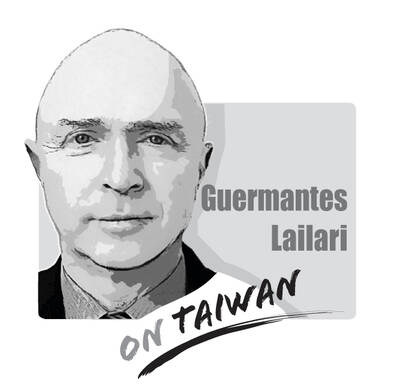KMT remains delusional
Bill Mcgregor asks a very pertinent question (Letters, Dec. 31, page 8). To the Chinese Nationalist Party (KMT), “one China” means the Republic of China (ROC) and all the territory that is claimed to be within that polity as stated in the 1946 ROC Constitution. This Constitution does not explicitly mention Taiwan or any other geographical area. Instead, it makes a vague reference to territories previously considered to be part of the ROC before World War II — as detailed in the failed 1936 Constitution, rejected at the time by the Chinese Communist Party (CCP). Neither the original 1912 ROC Constitution nor the 1923 Constitution included Taiwan as a part of the ROC for the simple reason that the framers accepted at the time that Taiwan was Japanese territory — something they did not envisage would change in the near future.
This administration uses the so-called “1992 consensus” to maintain the myth that the ROC equates to China, a definition utilized to meet the People’s Republic of China’s (PRC) demand that Taiwan is a part of China, whether ROC or PRC. It is essentially a political convenience that is critical to facilitating negotiations with Beijing. Indeed, shortly after coming to power, President Ma Ying-jeou (馬英九) took great care to turn back the clock and posit Taiwan as nothing more than a region or area of the ROC.
This KMT administration will not directly define their interpretation of the so-called “1992 consensus,” since to do so would highlight the fact that the Taiwanese government is still making an absurd claim upon the territories of the PRC, 32 years after the rest of the world firmly rejected such a claim.
Under this retrograde KMT administration, the ROC is an independent sovereign nation, not Taiwan. The word Taiwan, as a synonym for the nation’s title, is used by the KMT mostly before elections to beguile voters because they know that most people in Taiwan regard “Taiwan” and the “ROC” as mutually equivalent terms, both sharing the same sovereignty and de facto independence. The KMT charter and leadership do not share this perception. To them the ROC is literally their nation, including all of the PRC; and Taiwan is but a small part of it.
The celebration of the ROC centennial is evidence of their desperation to reignite the identification of Taiwanese as Chinese, whose nation is China, whatever the -interpretation. The key objective of the KMT remains the defense of their ROC project, regardless of Taiwanese democracy or the wishes of Taiwanese. To this end, the greatest threat to the KMT is not the PRC or CCP, but the vast majority of Taiwanese who, to the KMT, insultingly deign to believe that Taiwan is a nation separate from China as the rest of the world perceives it.
Bill will be waiting a long time if he wishes the KMT to explicitly state their interpretation of “one China” under the so-called“1992 consensus.” For the KMT, the definition of “one China” under the fictional “1992 consensus” is unimportant — what is critical is that it facilitates the retention of Taiwan as Chinese territory in any form and at any cost.
BEN GOREN
Taichung
The gutting of Voice of America (VOA) and Radio Free Asia (RFA) by US President Donald Trump’s administration poses a serious threat to the global voice of freedom, particularly for those living under authoritarian regimes such as China. The US — hailed as the model of liberal democracy — has the moral responsibility to uphold the values it champions. In undermining these institutions, the US risks diminishing its “soft power,” a pivotal pillar of its global influence. VOA Tibetan and RFA Tibetan played an enormous role in promoting the strong image of the US in and outside Tibet. On VOA Tibetan,

There is much evidence that the Chinese Communist Party (CCP) is sending soldiers from the People’s Liberation Army (PLA) to support Russia’s invasion of Ukraine — and is learning lessons for a future war against Taiwan. Until now, the CCP has claimed that they have not sent PLA personnel to support Russian aggression. On 18 April, Ukrainian President Volodymyr Zelinskiy announced that the CCP is supplying war supplies such as gunpowder, artillery, and weapons subcomponents to Russia. When Zelinskiy announced on 9 April that the Ukrainian Army had captured two Chinese nationals fighting with Russians on the front line with details
On a quiet lane in Taipei’s central Daan District (大安), an otherwise unremarkable high-rise is marked by a police guard and a tawdry A4 printout from the Ministry of Foreign Affairs indicating an “embassy area.” Keen observers would see the emblem of the Holy See, one of Taiwan’s 12 so-called “diplomatic allies.” Unlike Taipei’s other embassies and quasi-consulates, no national flag flies there, nor is there a plaque indicating what country’s embassy this is. Visitors hoping to sign a condolence book for the late Pope Francis would instead have to visit the Italian Trade Office, adjacent to Taipei 101. The death of
By now, most of Taiwan has heard Taipei Mayor Chiang Wan-an’s (蔣萬安) threats to initiate a vote of no confidence against the Cabinet. His rationale is that the Democratic Progressive Party (DPP)-led government’s investigation into alleged signature forgery in the Chinese Nationalist Party’s (KMT) recall campaign constitutes “political persecution.” I sincerely hope he goes through with it. The opposition currently holds a majority in the Legislative Yuan, so the initiation of a no-confidence motion and its passage should be entirely within reach. If Chiang truly believes that the government is overreaching, abusing its power and targeting political opponents — then